Exploring AI with Raspberry Pi 5
So, with the recent release of the Raspberry Pi AI Kit, I just couldn’t resist jumping into the AI pool with my shiny new toy. The AI Kit packs a whopping 13 tera-operations per second (TOPS) neural network inference accelerator powered by the mighty Hailo-8L chip.
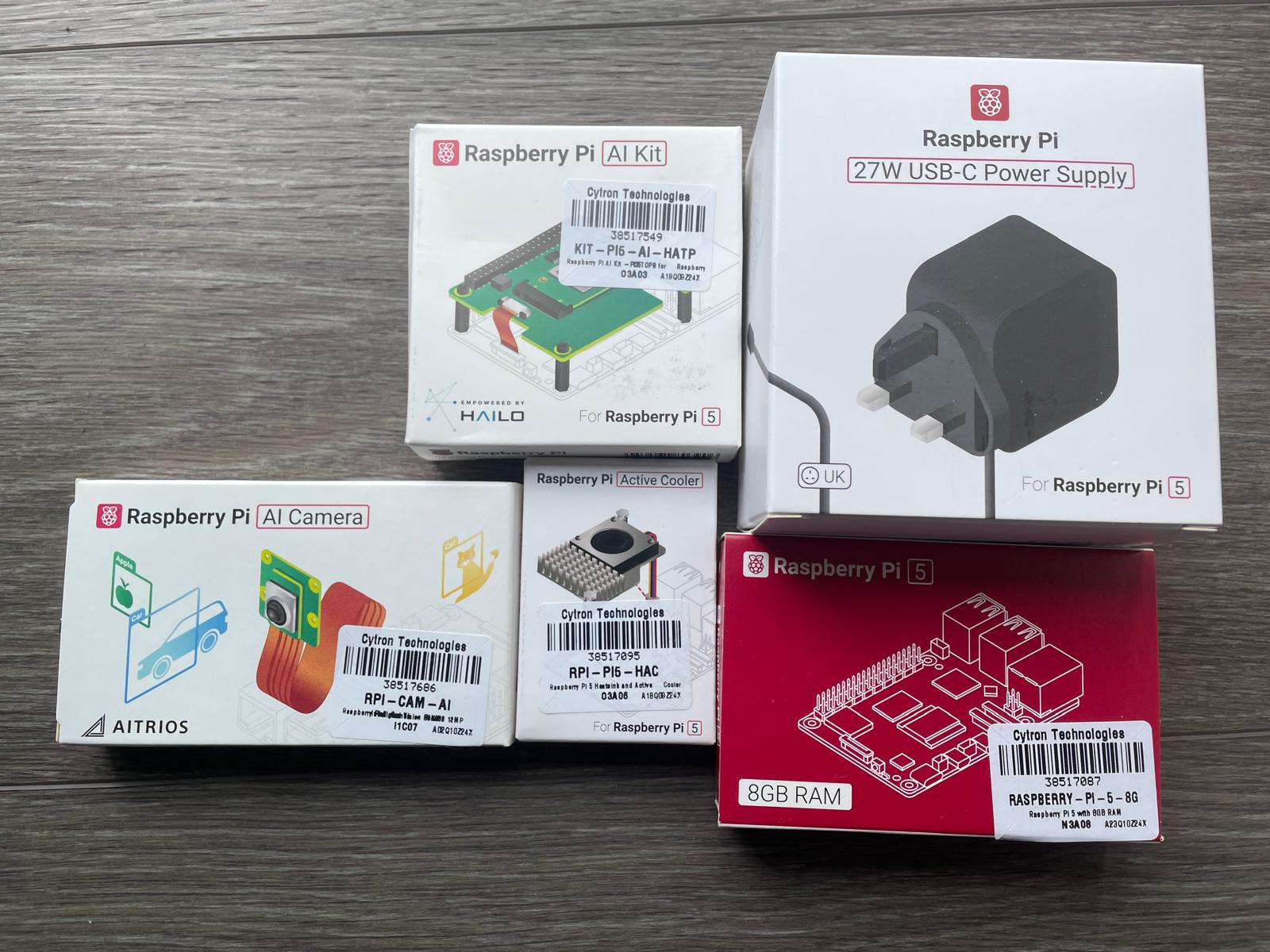
Getting Started
As always, I got straight to work, setting up my Pi by flashing the Raspberry Pi OS onto a 64GB SD card using the reliable Raspberry Pi Imager. I added the active cooler, connected the AI Kit, and hooked up the AI camera. And since I’m a big fan of building things (especially with Legos), I crafted a highly professional Lego case to house it all.
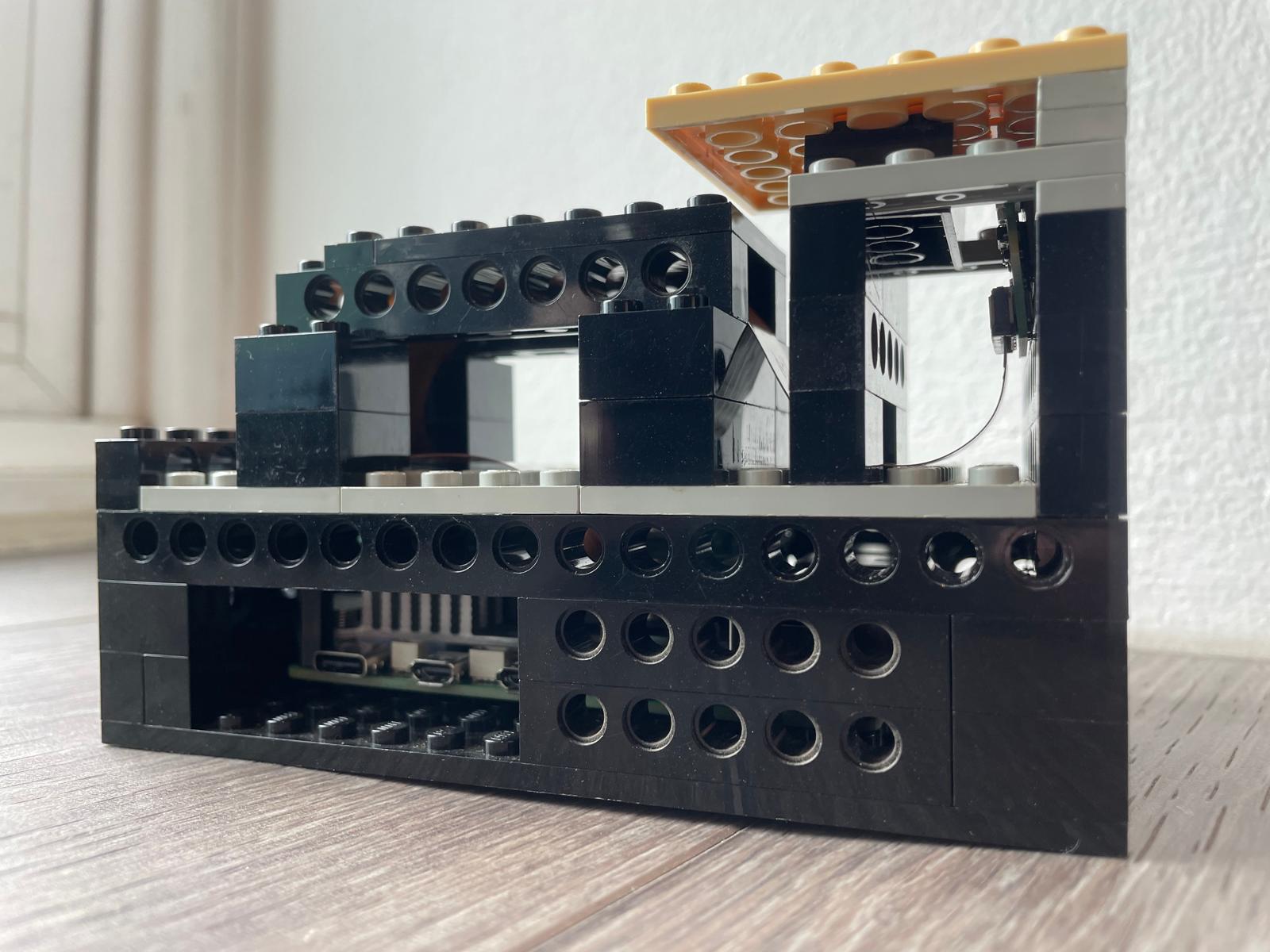
Setting Up the Raspberry Pi 5 + Hailo
Now, let’s get the brain of the operation fired up! Following the excellent Raspberry Pi 5 and Hailo setup guide, here’s how I got everything running smoothly:
sudo apt update
sudo apt full-upgrade
# Enable PCIe Gen 3 mode for max speed (because speed is life)
sudo raspi-config
sudo reboot
sudo apt install hailo-all
hailortcli fw-control identify

Next, I cloned the repository and installed the necessary tools:
git clone https://github.com/hailo-ai/hailo-rpi5-examples.git
cd hailo-rpi5-examples
./install.sh
Installing the AI Camera
For the AI Camera, I followed the steps in the official documentation. Here’s what I ran:
sudo apt update && sudo apt full-upgrade
sudo apt install imx500-all
sudo reboot
AI Camera
Now, the fun part — getting that AI camera working! The camera app comes with built-in stages for IMX500 object detection and pose estimation, which means my Pi can spot objects and even analyze human poses. Here’s a quick peek at the settings in the imx500_posenet.json file:
{
"imx500_posenet":
{
"max_detections" : 5,
"threshold" : 0.4,
"offset_refinement_steps": 5,
"nms_radius": 10.0,
"network_file": "/usr/share/imx500-models/imx500_network_posenet.rpk",
"save_input_tensor":
{
"filename": "/home/pi/posenet_input_tensor.raw",
"num_tensors": 10
},
"temporal_filter":
{
"tolerance": 0.3,
"factor": 0.3,
"visible_frames": 8,
"hidden_frames": 2
}
},
"plot_pose_cv":
{
"confidence_threshold" : 0.2
}
}
Some other post-processing JSON files can be found in /usr/share/rpicam-assets/:

To take it a step further, I ran the Pose Estimation app, which can detect body joints, limbs, and even facial features, using this command:
rpicam-hello -t 0s --post-process-file /usr/share/rpi-camera-assets/hailo_yolov8_pose.json --viewfinder-width 1920 --viewfinder-height 1080 --framerate 30
For object detection, I tried out MobileNet SSD, which performs detection and labels objects in real-time. Check out the action:
rpicam-hello -t 0s --post-process-file /usr/share/rpi-camera-assets/imx500_mobilenet_ssd.json --viewfinder-width 1920 --viewfinder-height 1080 --framerate 30
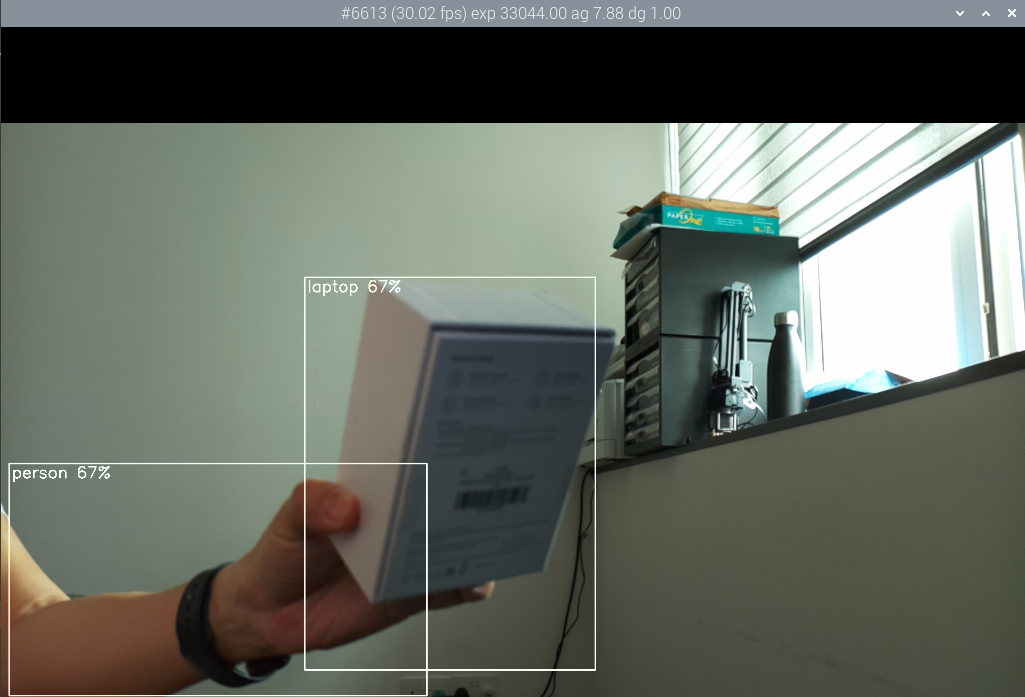
Though I love the AI Camera, it’s a bit of a lightweight compared to the full power of the Hailo AI Kit.
Hailo AI Kit
Now, let’s talk about the Hailo AI Kit. This thing is a beast. Using the YOLOv8s model, it handled object detection like a pro, with a smooth 13 TOPS (for context, that’s a lot of operations per second). Check out the official demo:
python basic_pipelines/detection.py
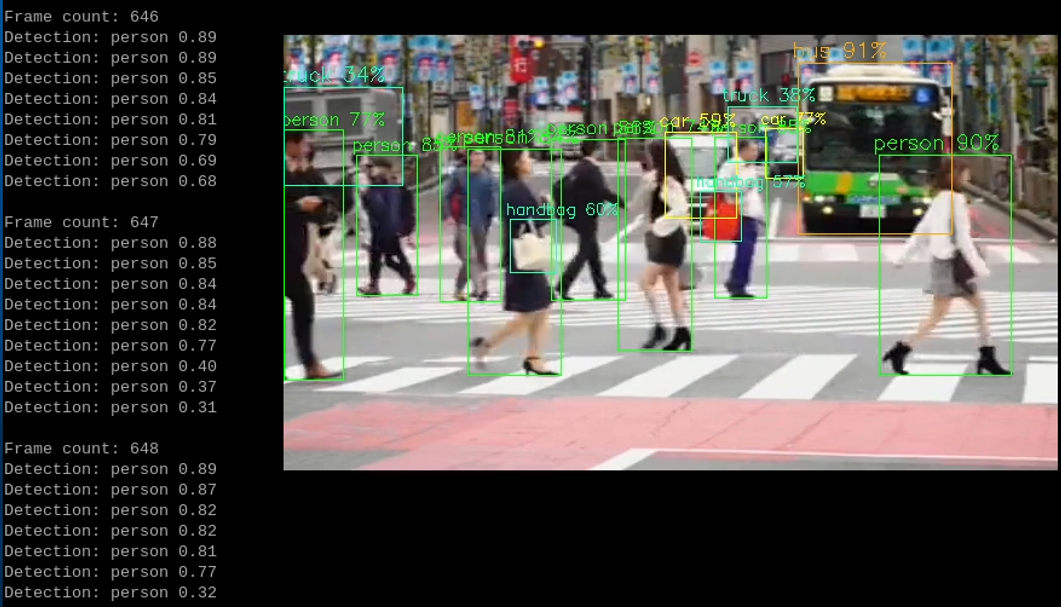
Next, I took it a step further with Retrained Models. With custom models loaded up, it was time to get specific with object detection:
# Raspberry Pi camera input
python basic_pipelines/detection.py --labels-json resources/barcode-labels.json --hef resources/yolov8s-hailo8l-barcode.hef --input rpi
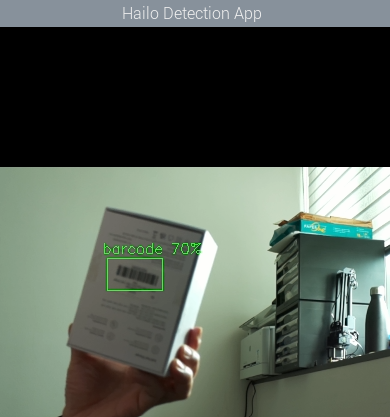
Then, I tried out Pose Estimation with the YOLOv8s_pose model, which detected not just people but their poses:
python basic_pipelines/pose_estimation.py
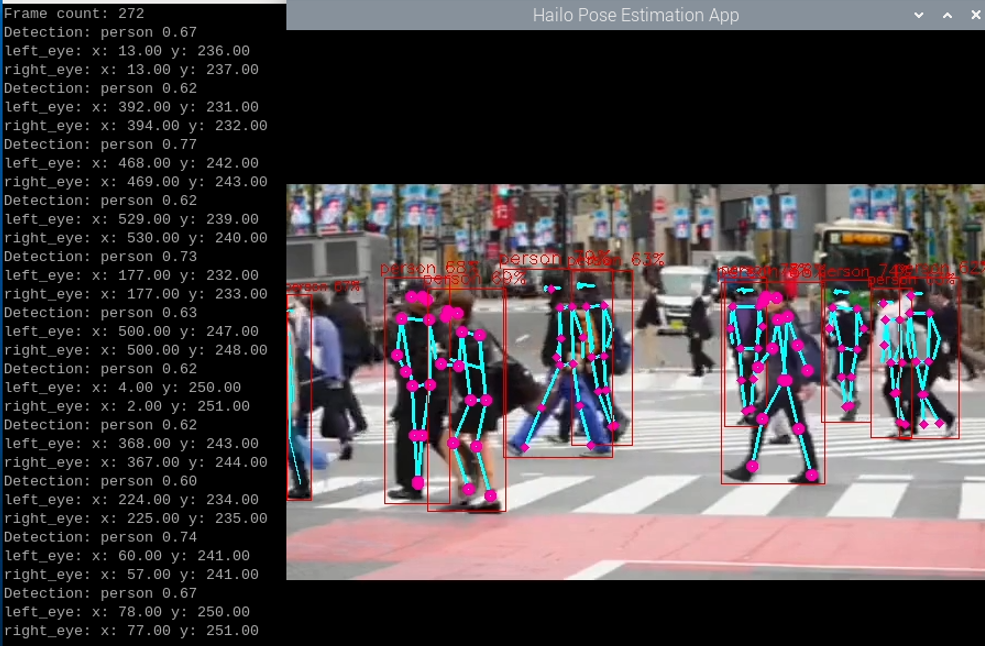
Finally, I explored Instance Segmentation, which allows the system to distinguish and separate individual objects within a scene.
python basic_pipelines/instance_segmentation.py
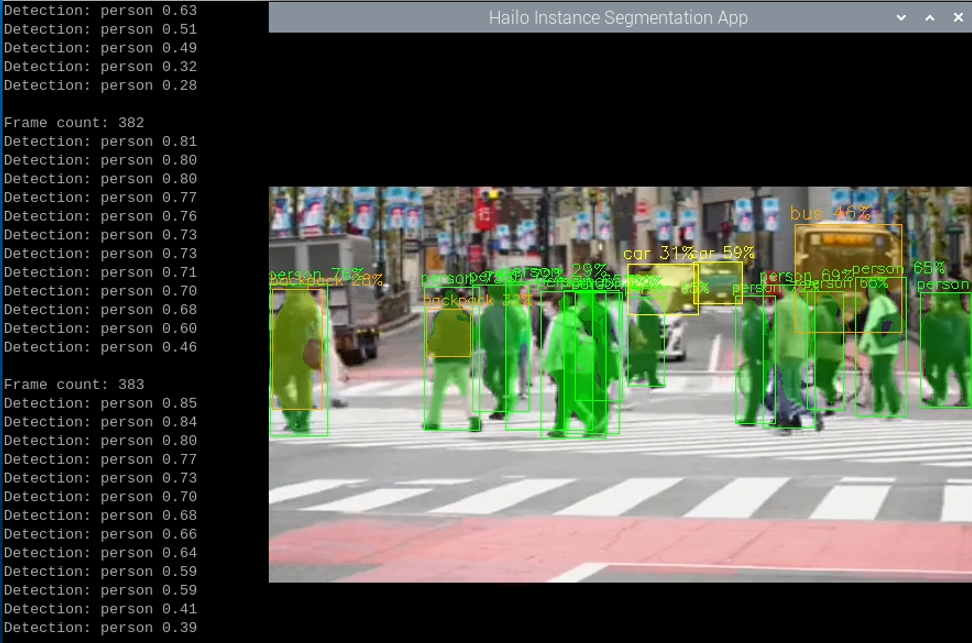
Wrap-Up
In conclusion, this little Raspberry Pi 5 is an absolute champ when paired with the Hailo-8L AI Kit. From object detection to pose estimation and even instance segmentation, I’ve only scratched the surface of its capabilities. So, stay tuned—this is just the beginning of my AI adventures!